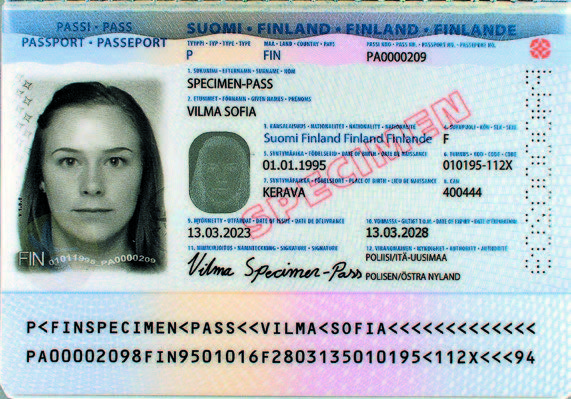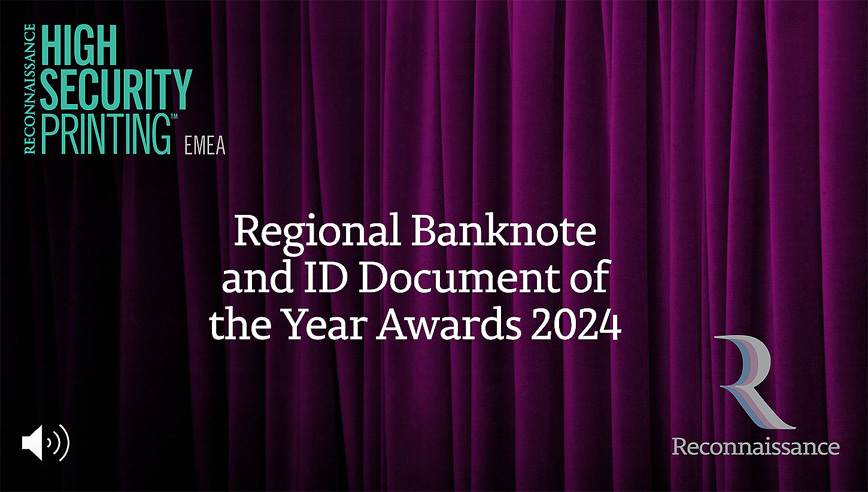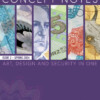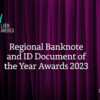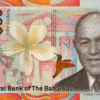The Regional Banknote and ID Document of the Year Awards form part of the industry’s High Security Printing (HSP) EMEA conference. This year’s event was held in Sofia, Bulgaria, with the awards presented at a special ceremony during the conference dinner on 5 March.
The regional Banknote of the Year Award recognises outstanding achievement in the design, technical sophistication and security of a banknote or banknote series, with emphasis placed on reflecting the cultural heritage of the issuing country in the note, and the relevance of the overall design and symbolism.
Awards were made for two categories in the Regional Banknote of the Year section this year –Best New Banknote and Best New Commemorative Banknote, with Morocco, Lesotho and Poland all receiving recognition.
In a new category, held for the first time this year, there was also an award for the Best New House Note – with Koenig & Bauer Banknote Solutions and Komori sharing the honours.
For the ID awards, there are also three categories – Best New Passport, Best New National ID Card and Best New ID or Travel Document. This year, Switzerland, Latvia, Bahrain and Finland were all winners, two of them joint.
Best New Banknote
Bank Al-Maghrib is rolling out a new series of banknotes in four denominations, the first since 2012. Designed and produced by its printworks, Dar As Sikkah, the first two new notes in the series – the 100 and 200 dirhams – issued last November and this January respectively –received the Best New Banknote award.
Both banknotes feature a portrait of HM King Mohammed VI. The main theme of the new 100 dirham banknote is the Moroccan Sahara. The key security features are a registered 5mm wide Galaxy® windowed security thread, which matches the gold-to-green colour shift and movement effects of the SPARK® Live denomination numeral.
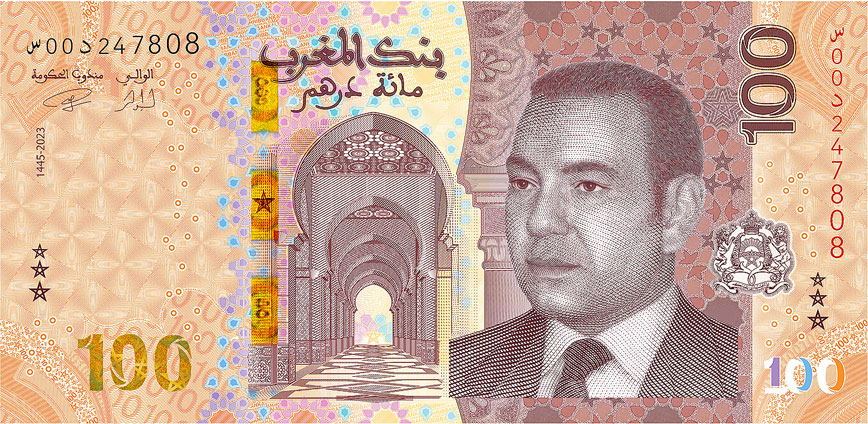
The second note in the new series, the 200 dirham, is themed on the economic and industrial development achieved under the King’s leadership. As with the 100 dirham note, the 200 dirham also features an optically variable windowed security thread – this time RAPID®– along with SPARK® Live for the denomination numeral.
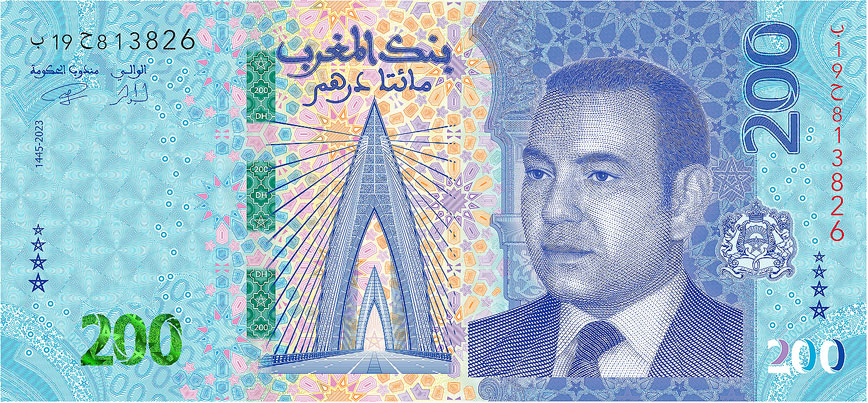
Best New Commemorative Banknote
There were two winners of the Best New Commemorative Banknote award.
First was the Central Bank of Lesotho, for the 200 maloti issued in July 2023 to mark the 60th birthday of HM King Letsie III, who has reigned since 1996.
This is the first time a commemorative note has been issued in Lesotho. The King is renowned for his passion for agriculture and the environment, and the banknote reflects this passion, being the world’s first Green Banknote, produced by Louisenthal. It is made from cotton from renewable sources, has a lower carbon footprint and is more durable than standard cotton banknotes.
The front features a portrait of the King in intaglio, alongside a Mokorotl (a conical straw hat which is the national symbol of the country) and the national coat of arms. The back of the note remains the same as the circulating 200 maloti, depicting a traditional Lesotho merchant on horseback. The watermark is a portrait of King Morena Moshoeshoe I, the first King of Lesotho.
The key security feature is a 4mm dynamic RollingStar® i+ ‘Moon’ thread on the reverse, the carrier foil for which was made from 70% recycled PET.
The substrate itself is a greener version of Louisenthals’ Hybrid ADDvance® – composed of 75% ‘Cotton Made in Africa’, and 25% FSC®-certified wood pulp, making it the first banknote to be made with the Cotton Made in Africa certification.
Furthermore, the substrate is protected by thinner layers of PET film, reduced from 6µm to 4µm on each side (30% less plastic and 5% less weight). Additionally, mineral-oil free inks were used for the Simultan printing.
5 million of the notes were produced for general circulation.
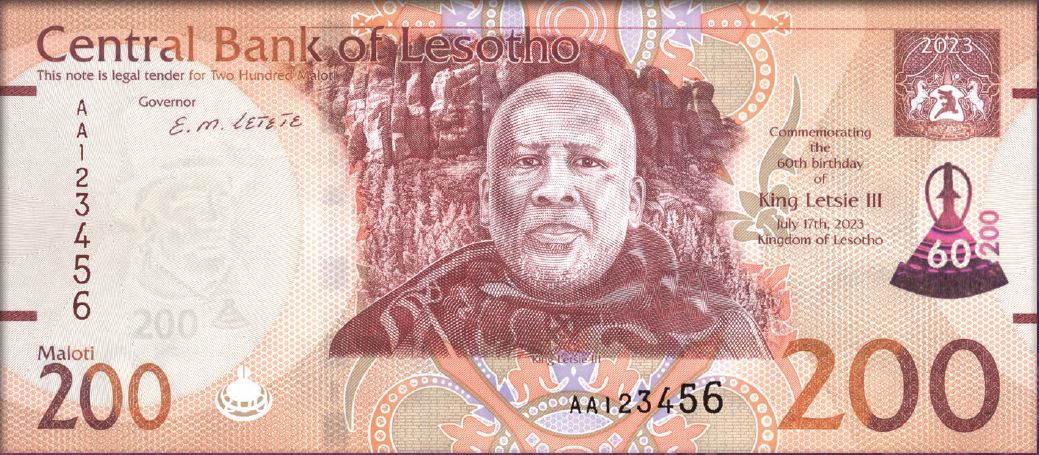
The second award winner was Narodowy Bank Polski for the 20 zloty commemorative banknote, dedicated to the famous Polish astronomer, economist and mathematician Nicolaus Copernicus, marking the 550th anniversary of his birth, and the 480th anniversary of his death.
The note was produced by the Polish Security Printing Works (PWPW) on CCL Secure’s GUARDIAN™ substrate, and 100,000 were issued by the National Bank of Poland in February 2023.
Its design is a dynamic celebration of the life and work of Copernicus, with his portrait depicted alongside several security features which are embedded into the substrate. They include a large transparent blue window containing CCL Secure’s Cinema™ feature, which shows multiple images of the earth rotating around the sun, paying homage to the astronomer’s groundbreaking heliocentric theory.
The feature is complemented by a clear transparent window containing a yellow spot colour, vignette line work and shadow images, providing further depth and movement and historical context to the other planets orbiting the sun (ie. the heliocentric system).
An additional smaller window includes a VIVID™ Colour feature representing the solar system. In daylight the feature is a white, photographic-like image of the solar system, but under UV light it is fully coloured. An iridescent stripe is an additional security feature that complements the image of old coins decorating the reverse of the note, representing Copernicus’ formulation of the quantitative theory of money.
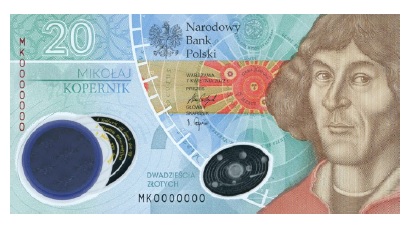
Best New House Note
In this new award category, the joint winners were the industry’s two manufacturers of banknote production equipment.
First was the Laika series from Koenig & Bauer Banknote Solutions, intended to explore and push the boundaries of what is possible in design and production. The design theme was space, and the series took its name from Laika, the first animal (a dog) to orbit the earth in the Soviet spacecraft Sputnik 2, launched into outer space 1957, that paved the way for human spaceflight.
The series comprises a family of five specimen notes, which was the result of several partnerships within the high security printing industry – including with De La Rue, LenSys, Louisenthal, Lumenco, SICPA, Kurz, PurintoMark, NPA, and PWPW.
The preliminary ideation and design work for these notes was given to a class of young design students in order to spark creativity and bring fresh perspectives and ideas. When viewed in ascending order, the notes illustrate the solar system in its entirety, from Mercury to Pluto. This idea was taken further with the colours continuing from one banknote to another.
The designs were then ‘banknotised’, whereby the preliminary designs were turned into designs that could be produced and circulate in the cash cycle. The boundaries of technology were pushed as far as possible, while ensuring efficient production, minimising waste, and making machine readability a flawless process.
While each denomination is usually printed on one sheet, for the Laika series several designs were combined on one sheet, dramatically reducing the need for job changeovers and limiting waste.
The full series of five specimens was divided into only two sheets using two different substrates (the three lowest on polymer and the highest on cotton paper).
Both new and proven security features were integrated throughout, including the advanced UV feature SUSI Flip™, SUSI Optics™, which combines three printing processes and currently offers up to 19 different effects to choose from, and the see-though feature SimMark™, made with a special ink called PurintoMark™ which is applied with the NotaScreen machine to create transparency where the feature is located, making it more visible even under dim light.
The new generation of SPARK®, namely SPARK Flow® with its two variants (PRIME and DIMENSION), were also used.
Intaglio was applied on both sides of each specimen, including tactile marks specifically developed for the visually impaired community.
To ensure optimal machine readability while keeping production efficient, embedded features such as magnetic and coded security threads, as well as applied intaglio features such as IR-A/IR-T pairs, SICPA’s NEOMAG® and SICPATALK® were integrated into the design, as were Galaxy® threads from Louisenthal, an APL diffractive patch from KURZ and multi-directional latent images, among others.
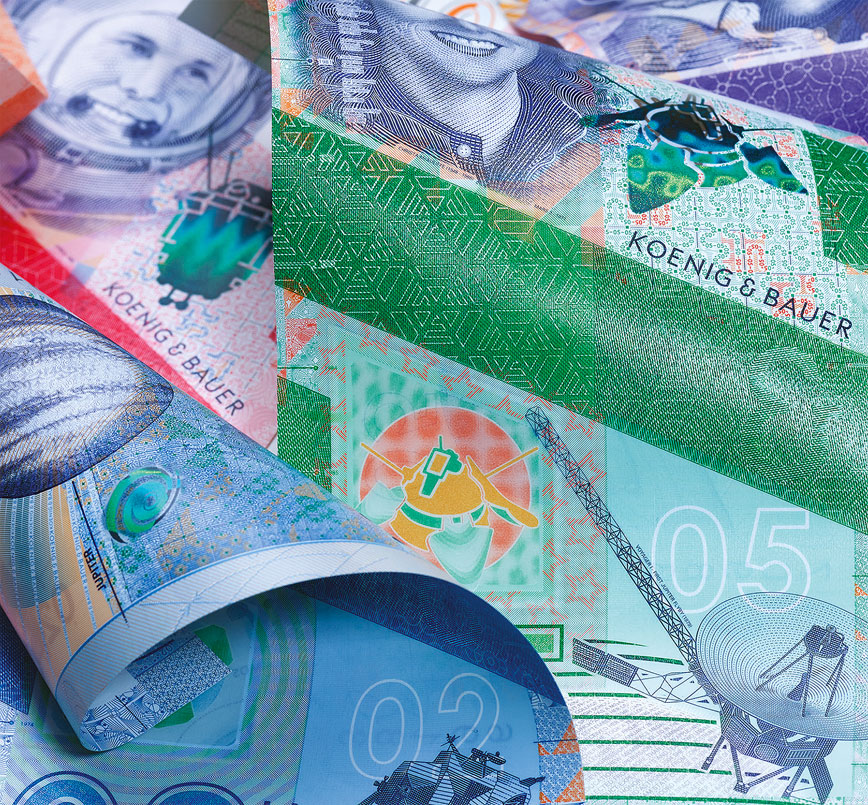
The second winner of the House Note award went to Komori for its Phoenix 2023 house note, produced to celebrate its centenary and which brought to life its concept of ‘Power to the Print – Technology that Empowers’.
A collaboration with Jura, Landqart and SICPA, the note was intended to demonstrate the potential for security through print alone, and combines classic, proven security printed security features with some of the latest technologies, including digital printing used for the numbering. This has allowed each banknote to be unique and to interact with mobile phones.
The main design feature on the front is the Phoenix, the legendary immortal bird that lives forever by rising from the ashes of its predecessor, along with an image of Mount Fuji. The back depicts the company’s production plant at Tsukuba, further images of the Phoenix, and cherry blossom.
The design uses 17 offset and five intaglio colours, including five ultra-violet (UV) colours. The note was produced in partnership with Landqart, whose Durasafe® substrate was used, SICPA for the inks, and Jura, which produces pre-press systems and software, and security features. The house note contains level 1, 2 and 3 security features.
Unusually, the note also uses digital inkjet printing for numbering the banknotes and linking images of phoenixes to the serial numbers, each note having unique numbers and images. One of the serial numbers is modulated in a unique wave shape. The Jura technology links to these digitally printed numbers and images.
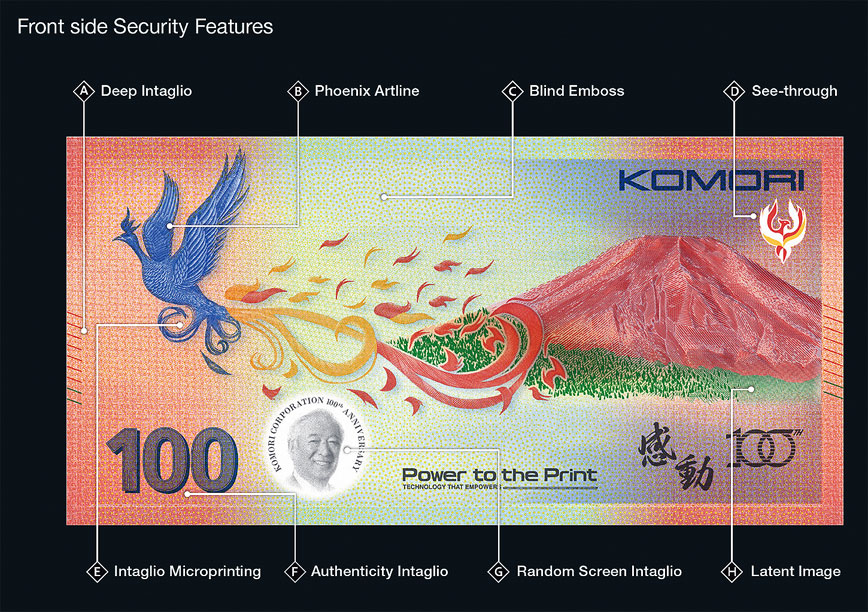
Best New Passport – Joint
Joint winner of the Best New Passport Award was Bahrain’s Ministry of the Interior (Nationality, Passport and Residence Affairs) for the new Bahrain ePassport, which has already won international acclaim, winning a Gold Badge at the London Design Awards. The design came out of HID’s UK office, marking a significant milestone for Bahrain as it transitioned from a machine-readable passport to an electronic format.
Featuring ten distinct visa page designs, each page highlights different facets of Bahrain’s culture and history, present and future, such as its marine life and Formula One racing. It is also purported to be the world’s first passport to incorporate a hashtag, #teambahrain, reflecting a contemporary approach to national identity.
Bahrain ePassport © Nationality, Passports & Residence Affairs.
The ePassport, supported by HID’s chip operating system SOMA™ and HID Integrale™, will store biometric and biographic data, enhancing overall security and convenience for citizens and aligning Bahrain with the ICAO’s Public Key Directory (PKD) group.
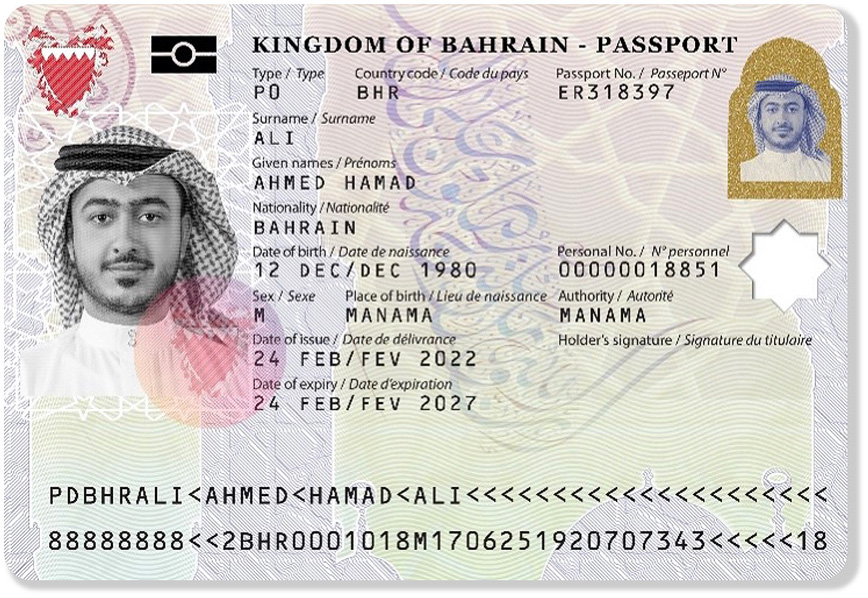
The other joint winner of the Best New Passport was Latvia’s Office of Citizenship and Migration Affairs, for the new Latvian ePassport.
Latvia and the team at Veridos set out to produce a blend of tradition and technology in the new ePassport. It showcases Latvia’s rich culture through intricately designed pages depicting natural landmarks in flora and fauna.
It also includes three innovative security features that combine a transparent window and stripe elements with unique materials, personalised data and special effects.
Amber ID improves document personalisation by adding a metallic optically variable window with a positive-brilliant photo of the document holder that changes with colour, light and viewing angle.
Diamond ID is part of the LOOK® ID feature, a horizontal transparent stripe. Combined with semi-transparent Amber ID windows, LOOK ID offers a wide range of highly secure, dynamic features. Diamond ID is based on a special smart colour technology developed in collaboration with CST (Crime Science Technology).
The third feature, Spectre ID, makes static images appear to move when they are tilted. With Spectre ID, the special effect can now also be applied to the transparent window areas of cards and data pages in combination with the repeated holder’s image.
In addition to the documents, which were delivered in collaboration with the Portuguese state printer INCM, the contract between Veridos and the Latvian authorities includes the supply of the central personalisation system as well as support and maintenance services over a period of five years.
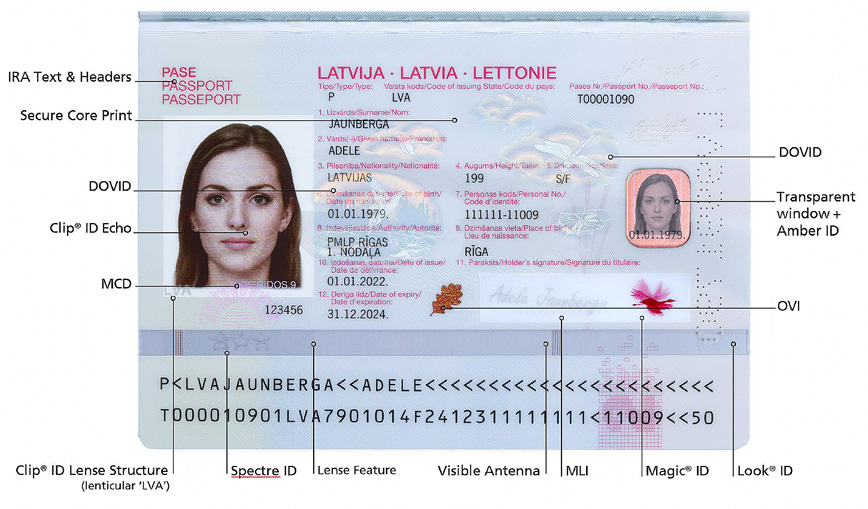
Best New National ID Card
The winner of the Best New National ID Card was the Federal Department of Justice and Police, Fedpol, for the Swiss ID card. It was launched alongside the new Swiss passport to form a family of identity documents with a uniform design focusing on the themes of mountains and water. Issued in March 2023, the card was completely redesigned and incorporates advanced security standards.
One of the new security features is the Thales Gemalto Laser Engraved Floating Image, where different laser engraved images seem to move or float when the card is tilted. Since this feature requires a special lens structure and sophisticated personalisation optics it is claimed to be virtually impossible to counterfeit.
The new card also features Thales Gemalto Window Lock, a transparent area with a positive and negative secondary image of the card holder, created by laser ablation of a thin metallic foil inside the window.
Another enhanced printed feature of the new card is Gemalto True Vision. When viewed under UV light, an edelweiss flower becomes visible with its natural colours on the back of the card.
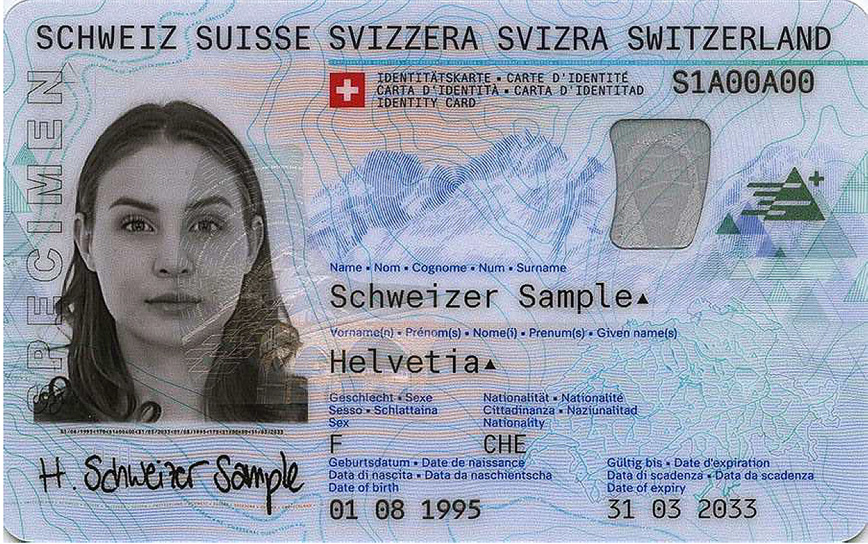
Best New ID and Travel Document Series
The National Police Board of Finland won the Best New ID and Travel Document Series award for the new set of Finnish identification and travel documents.
Launched in March 2023, the visual theme is the Finnish Archipelago Sea, the world’s largest archipelago. The design incorporates recognisable national animals and flowers such as the Ladybug, Whooper Swan, Baltic Herring and Lily of the Valley – created in a variety of different techniques and styles.
The most visible changes in the layout of the documents are the unusually minimalistic cover design of the passports, the new orange colour of the temporary passports, and the larger size of the photo in the ID cards.
The series of documents incorporate advanced security features and biometric solutions to fight ID fraud and forgery, while still allowing for easy verification of the documents.
On the top edge of page 3 of the passport there is an intriguing feature where optically variable ink (OVI) gradually changes its appearance with the help of a diffractive effect, producing a distinctive colour switch which holds across the area.
A new functionality in both the passports and the ID cards is the 2D bar code for easier and more extensive machine reading.
There is also a function that allows upgrades of the documents’ security software in the field, which comes as part of Thales’s commitment to cybersecurity.
